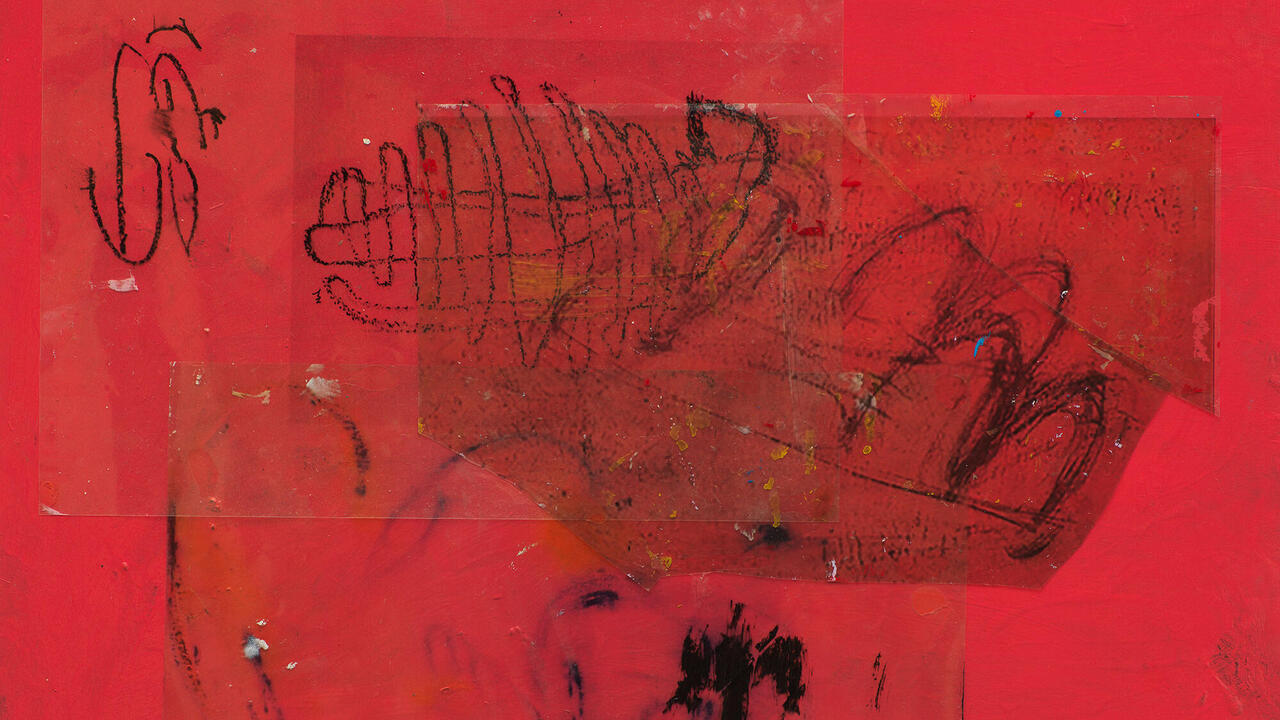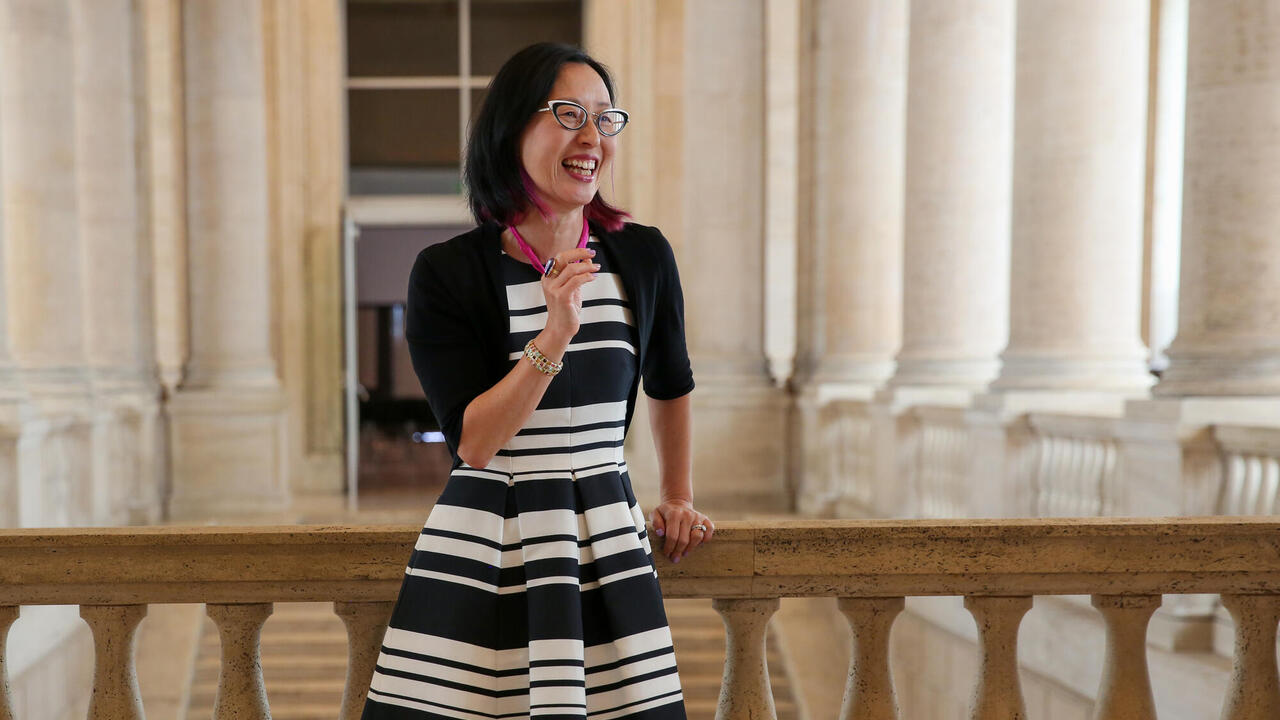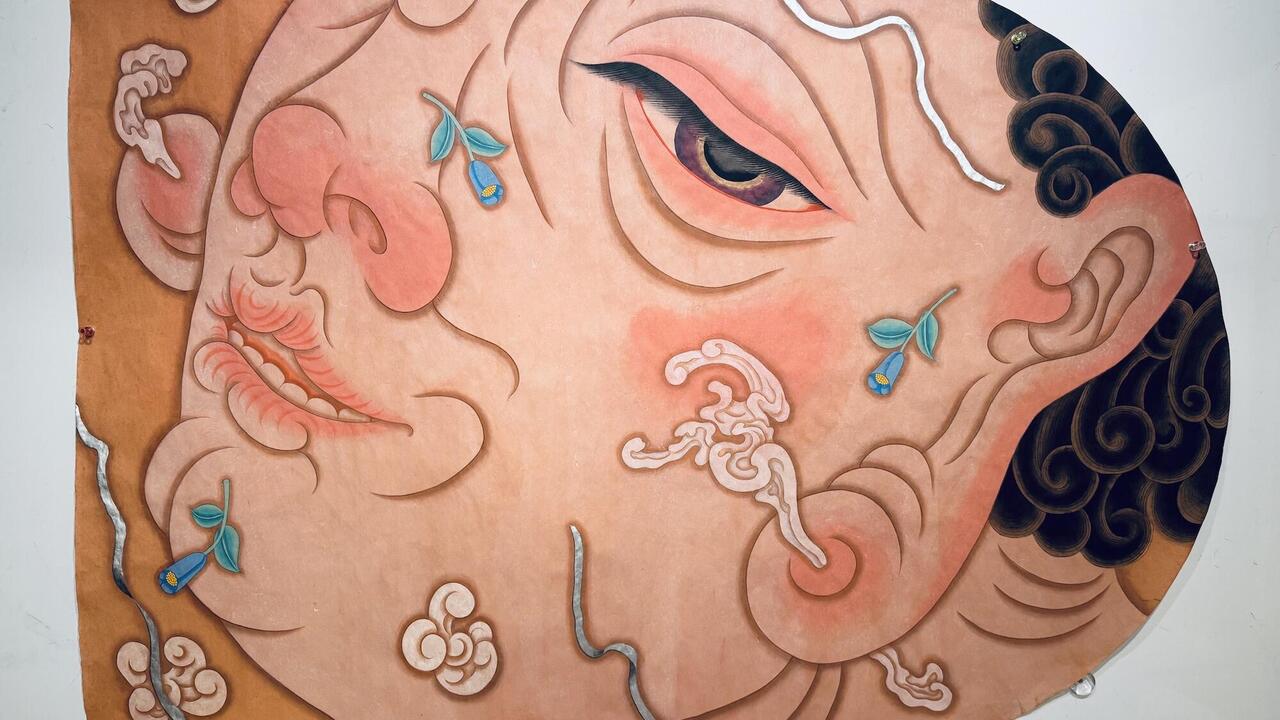Earth is the Alien Planet
Doug Aitken in conversation with Ed Ruscha
Doug Aitken in conversation with Ed Ruscha

Doug Aitken has interviewed a range of creative practitioners including Claire Denis, Olafur Eliasson, Rem Koolhaas and Ed Ruscha, on the topic of non-linearity. He intends to publish the conversations in a collection entitled The Broken Screen. His conversation with Ruscha –whose drawings and photographs are the subject of two major surveys at the Whitney Museum of American Art this summer – extends from Ruscha's films to Aitken's attempt to take a boat up the artificial Los Angeles River, and sheds light on the ways these two LA artists from different generations conceive of and experience their city.
Ed Ruscha: I grew up in Oklahoma City. It went dry for me about the time you have to get serious and do something – make a direction in your life that is a bit different from what you're used to. I knew I wanted to go to art school. I had movie images of New York and I had travelled to California. I thought, maybe California is the place to go. Then I came out here and started art school.
Doug Aitken: So you already had a vision of Los Angeles and Hollywood before you came, which was cultivated from cinema?
ER: In the cinema and visiting on road trips.
DA: When did you move to Los Angeles?
ER: In 1956. I remember meeting an old man who said, 'God, this place used to be a paradise in 1942'. I'll never forget that. I knew exactly what he meant.
DA: Did you make films in the '70s?
ER: I made two half-hour movies. One is called Premium (1969–70) and the other is called Miracle (1975). They are hardly scripted, but there is dialogue. The first one cost $13,000, which was exactly what I got from the Guggenheim fellowship. I spent it in three days and I had the film.
DA: In these films, was there a certain sensibility from your books or paintings that came off the page and canvas and on to celluloid?
ER: Somehow it all intertwines, and I forget where. I can't always identify where it intersects, movies and paintings or movies and art? It all sort of works together. Then you compound it by putting music with it, like an added piece of candy. I didn't see the movies so much as reflecting my paintings, but they certainly reflect me. There are some similar threads - absurdity and paradox, like I would feel about my paintings. But with painting I've always felt it's an involuntary reflex. I somehow wake up and have this thought and carry it through. Blind faith, I guess. Same thing with the movie, except I found out that it involves extensive co-operation and planning. Even if you say I am going to be so automatic with this thing, everybody that is working with you also has to be on guard to be automatic and fluid. You know that you are running that generator out there and remember you are paying for it. I had to be mechanical about it. I spent a lot of time signing cheques. It was kind of enriching to do something like that, but I didn't yearn to live that life. Do you make films and videos?
DA: Yes, my work is sometimes more like making a film and then deconstructing it. It's more about making something that can be broken apart and creating something else that is perhaps more architectural or experiential. Something that is not secure within the safety of the screen. I'm very interested in the idea of the distance of the viewer from the work and the safety of the gaze. I see this idea in your paintings Los Angeles County Museum on Fire (1965–8) and the 20th Century Fox sign Large Trademark with Eight Spotlights (1962). In a very subtle and sly way there are aggressive marks that come off the canvas and out at the viewer. They don't feel passive at all. Were these paintings automatic reactions to ideas, or were you thinking of ways to break the picture plane?
ER: I was thinking like an abstract artist. Both of those pictures have a lower right-hand to upper left-hand thing. I can't recall the movie, but many movies have had that issue. A bridge shot of somebody travelling on a train comes from nowhere in the lower right-hand corner and soon the train fills up the frame. That little piece of film, which doesn't really tell us anything except 'train going by', will show someone travelling in the scene. That idea always leapt out at me. I have been responding to that and admiring that idea for many years. It probably still affects me. The Los Angeles County Museum on Fire painting is sort of like the same thing, just like a piece of table-top sculpture.
DA: Like an architectural model?
ER: Yeah, a lot of my paintings have that aerial oblique view. Even though my work is figurative, I still feel like I learned it all from abstract art. I have pretty much been doing the same thing since I was 18 years old. I have taken little side trips with other forms of art. But I have always come back to these initial things that got me going. Maybe it is because I painted signs or worked for a printer and learned how to set type.
DA: It's interesting that you grew up in the first generation who used tools of mass communication: graphic design, signage, advertising were fresh within the art-making process. You had all those tools at your fingertips with an art-making sensibility. It is very different now; those things are taken for granted.
ER: They really are. Did you go to art school?
DA: I went to Art Center [in Los Angeles] for a little bit. Like you, I studied illustration initially, not fine art.
ER: I finally went into fine art, but I took advertising courses and design courses.
DA: It was the same for me. I was doing art since I could remember. But my idea was that I would go to school in order to support my fine art. I took as many diverse courses as I could. I was fascinated by everything that related to communication, but not to the idea of pigeon-holing oneself through genre.
ER: Art Center was the premier school. That's where I intended to go but when I got there the quota was filled. That's how I ended up at Chouinard School of Art. At that time, they had a dress code at Art Center. You couldn't wear a beret or have facial hair. So I ended up at Chouinard, which was actually a blessing because I got to mix with some good people. When we were in art school, it was all didactic – someone would come along and make some clumsy painting of a spark plug. Then we'd just wake up and say, 'Wow, a spark plug! Let's see more spark plugs.'
DA: Exactly.
ER: Maybe it was the dumbness, or the shock of it, or the tabooness of it. You're not really supposed to paint spark plugs.
DA: And you didn't stop there. It just got dumber and better.
ER: People are so much more aware than they were 40 years ago about these things blending together. Because at one time there was 'easel painting' and that's what you did. You had to pick a subject, or you could paint abstractly if you wanted to, but don't bring popular culture into it. I just felt like bringing popular culture into it.
DA: What was your motivation to bring popular culture into it?
ER: Probably seeing the possibilities of it and seeing the beauty of it. Not that an artist has to grow up to be naughty, but you want to do something that not everyone else is doing.
DA: Was your first book also your first exhibited 'art'?
ER: My first book, 26 Gasoline Stations (1963), came out at the same time that I was doing paintings. I had my first show of paintings in '63 over at Ferus Gallery on La Cienega. I was making those books at the same time I was making paintings. And wrestling with it. What exactly am I doing? If you want to do it, keep doing it, keep asking yourself, 'why I am doing it?'
DA: Where did the books come from? Were they an extension of painting and photography, or was it restlessness with books?
ER: A reckoning with this thing of books, pages, print, typography and even photographs coming to you via information. I even got to the point where I would paint the sides of a canvas. I would paint the words on the side like the spine of a book. I could have argued the point that I was a sculptor. I just sculpted things that were an inch and a half wide. People would say, 'Do you qualify to be a sculptor?'
DA: What ghetto would you like to put yourself in?
ER: I am a two-dimensional artist, but I had fantasies.
DA: Have your photographs from the books been exhibited as photographs?
ER: This June I am doing two separate exhibitions at the Whitney of drawings and
photographs. They will have my books and the photographs from the books. I am showing archival photographs with their offspring - the book.
DA: Of all of your books, Hard Light (1978) with Lawrence Weiner, and Royal Road Test (1976) seem the most filmic or suggestive of a filmic narrative.
ER: The word 'narrative' is such a broad term I'm not sure I would apply it. But there is a kick-start to something that makes you think. The idea was to keep it as free-flowing, as unserious, as possible. Collaborations have always had the lightest attitude; you would think that it would call for serious planning - not at all.
DA: Hard Light felt like stills from some kind of imaginary movie. It felt like there was something dramatic going on that was something I hadn't seen in your work before - the character interplay, lighting and transitions.
ER: I know. It was not part of my usual approach, and neither were my films. I appreciated this Hollywood way of keeping fluidity of movement. If someone walks through a door, they would match the action. I really admire those people for what they do, but I think it's not crazy enough.
DA: The books are interesting in how they suggest a narrative out of the most banal scenes. The images act like mirrors by extremely simple acts of isolating spaces and holding them up, which makes you reflect all this information about your associations or relationships with those passing moments or your experience with similar places.
ER: You're speaking of seeing them having grown up as a city boy here in LA?
DA: I don't know if someone from somewhere else would have the same reaction as me. It was the power of isolation. The work, through its coolness, offers up a different narrative to each viewer because the viewer has to project his or her own information on to it, almost like an empty film screen.
ER: Or suggestors. I was thinking of myself as coming from more of a rural environment to a place like LA, which is an accelerated culture. Coming out here, I see the possibility and potential in living in a place like this.
DA: It makes me think about some of your paintings from the 1980s, which remind me of film stills. The silhouette of a ship, Homeward Bound (1986), or the image of a Hollywood hills house at night, Fistful of Aliens (1986), are like frame grabs from uncompleted stories.
ER: It's information age art. I'm not a seafaring guy. My reason for doing that is to capture the idea of the thing rather than the thing itself. Lately I've painted pictures of mountains. Some people like to think that I set up a canvas outside in front of a mountain and paint that picture to try to capture that particular mountain. I am trying to capture the idea of the idea of the idea of the mountain.
DA: Like a graphic signifier? Do you find that's also true of words? Do you see words as shapes and forms, or are you trying to distil meaning out of the word?
ER: I'm not too strict with myself with messing with words. I try to keep it as fluid as possible and not have too many reasons for using or trying to capture a certain word. And I don't illustrate 'em. I don't search 'em out - they come to me. If I find them funny or valuable - that's when I move on them. There's no goal.
DA: It seems like there is a very specific relationship between the landscape or the topography in your painting Highland, Franklin, Yucca (1999), which has mountains in the background with the street names superimposed on top at a right-angle. You're forced to view of the mountain with the grid-like layout of a place like Los Angeles.
ER: I am trying to hammer down my feelings about those particular city intersections and the idea of the city grid. You might say 'How about Lincoln and Pico?' Your mind can drift and call up all kinds of past experiences that happened on that corner. You can go through your whole evaluation of society by sizing up a strip mall that you see there as totally valueless or decadent. But it still has some truth to it that makes you want to do something with it.
DA: I always wanted to have a way to understand this city better. This city is so non-linear, so broken apart. I wanted a timeline to follow - one thread - but instead I found many divergent paths. So recently I took a really interesting trip in Los Angeles. I went to San Pedro and tried to go up the Los Angeles River in a small military-type boat to see how far we could go.
ER: That is a good challenge. You might just reach a dead end!
DA: It was a two-day trip. The first day I went as far as I could go by boat. Then the second day we drove the continuation of the river. I felt like if I could just follow it 'til it ends, even though it's a joke of a river, I would understand the narrative of the land a little bit better. This concrete runway, viaduct that leads from the Pacific Ocean into this dense metascape. Then it literally disappears into a trickle of water the size of a knife.
ER: That should be J.G. Ballard's next book - a story about the LA River. He could do it. And have all these great descriptions of the concrete viaducts, embankments and all that.
DA: He's the master of concrete. I've been really interested in the idea that we
need to find a different way to navigate through information and experience. Maybe we need to find a way that is more dematerialized - lighter, looser and more nomadic. We should be making our own structures that take into account acceleration, and the experience of time being more fragmentary.
ER: Maybe this is what you are doing talking to people for your book. This is like a work of art for you.
DA: It is, in a way. Your initial attraction to the urban and suburban everyday sight is in seeing it fresh. Really finding it truly interesting because it was initially foreign - the fascination of the new.
ER: The fascination of the new is a great motivating force. Some people are convinced that there is nothing really new. I say that's wrong. There are going to be a lot of things that people do with art to be inspired by.
DA: Perhaps, it always comes back to perception and representation - that driving force behind our culture. Culture being the engine that creates and makes new things without trying to market them: literature, art and music. It comes back to this notion of trying to discover something that is closer to how we experience the world. It's the driving force that is always going to create the new.
ER: What do you mean, 'driving force'?
DA: The motivation in culture to continuously make more art, music and books. It's a search and an appetite that can never be satisfied. There will never be nothing new. It is just about perception and finding value in things. It's kind of John Cage-like, what we are talking about. It's not about creating something specific; it's about opening up your perception to a much wider framework. Allowing yourself to be open to randomness and connections happening by happenstance.
ER: He was like a Zen master of all that. Things go in cycles. We recognize people who are doing things today that we find valuable and profound. You can bet that these people and events will someday be buried. The ideas will be revolted against and forgotten and maybe resurrected somewhere way down the line. I have a real philosophical take on the whole thing. All this is so fast and so temporary. I always remember Robert Smithson - he was a friend of mine. He said, 'One pebble that moves 10 inches in 20 million years is enough action to keep me really excited.' I like to think of myself as an ambling rambling person who doesn't have to concern himself with time. The wandering soul: that's what we all dream about isn't it?
DA: I think that not being concerned with time is the most difficult thing that we're confronted with.
ER: Yes, that's a tough one.















